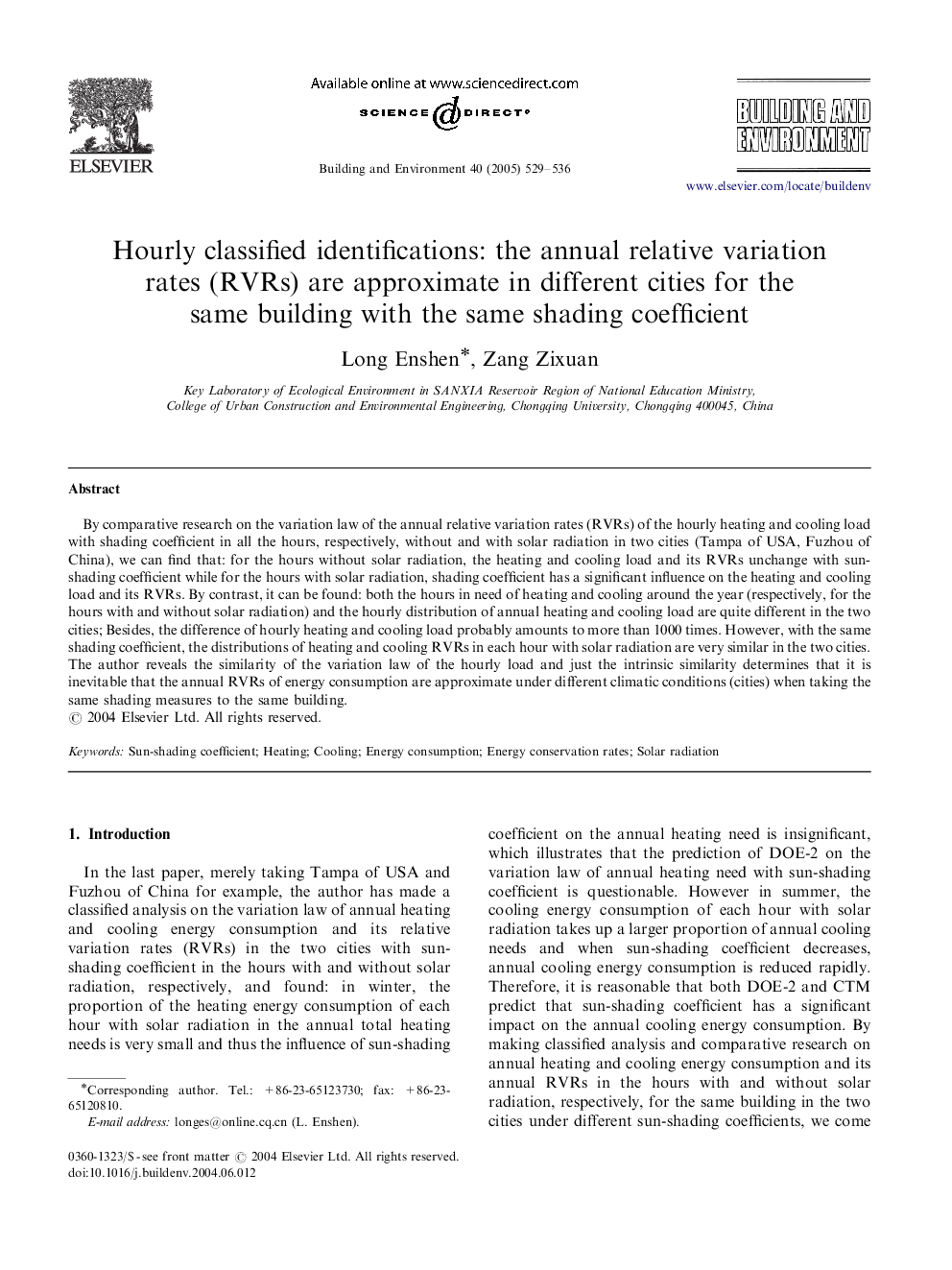| Article ID | Journal | Published Year | Pages | File Type |
|---|---|---|---|---|
| 10283200 | Building and Environment | 2005 | 8 Pages |
Abstract
By comparative research on the variation law of the annual relative variation rates (RVRs) of the hourly heating and cooling load with shading coefficient in all the hours, respectively, without and with solar radiation in two cities (Tampa of USA, Fuzhou of China), we can find that: for the hours without solar radiation, the heating and cooling load and its RVRs unchange with sun-shading coefficient while for the hours with solar radiation, shading coefficient has a significant influence on the heating and cooling load and its RVRs. By contrast, it can be found: both the hours in need of heating and cooling around the year (respectively, for the hours with and without solar radiation) and the hourly distribution of annual heating and cooling load are quite different in the two cities; Besides, the difference of hourly heating and cooling load probably amounts to more than 1000 times. However, with the same shading coefficient, the distributions of heating and cooling RVRs in each hour with solar radiation are very similar in the two cities. The author reveals the similarity of the variation law of the hourly load and just the intrinsic similarity determines that it is inevitable that the annual RVRs of energy consumption are approximate under different climatic conditions (cities) when taking the same shading measures to the same building.
Related Topics
Physical Sciences and Engineering
Energy
Renewable Energy, Sustainability and the Environment
Authors
Long Enshen, Zang Zixuan,
